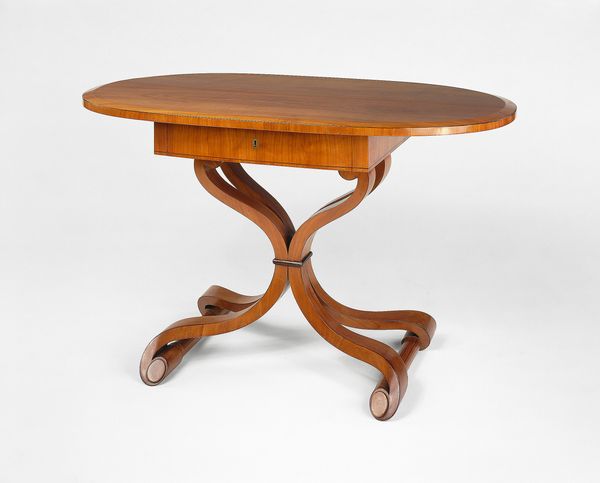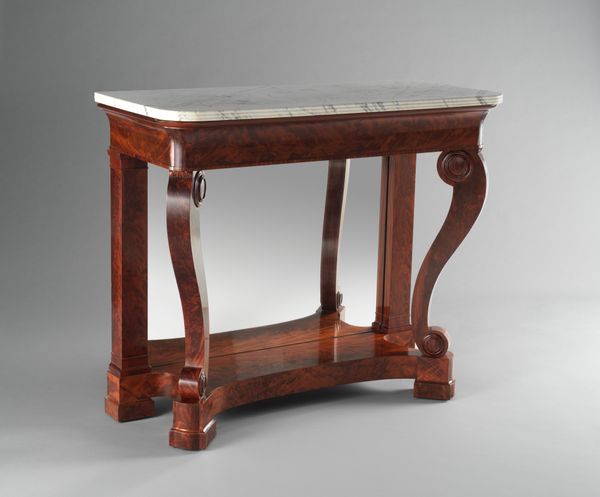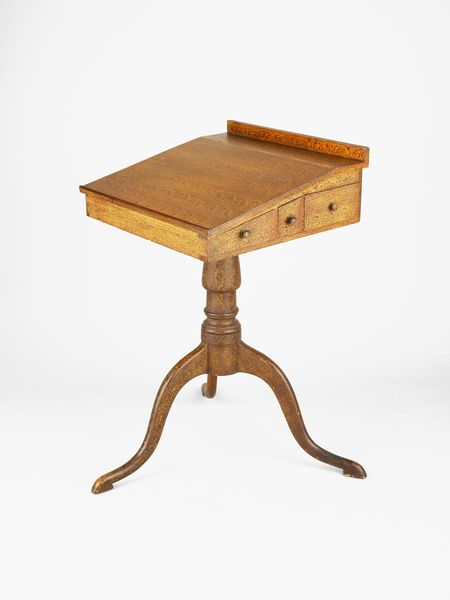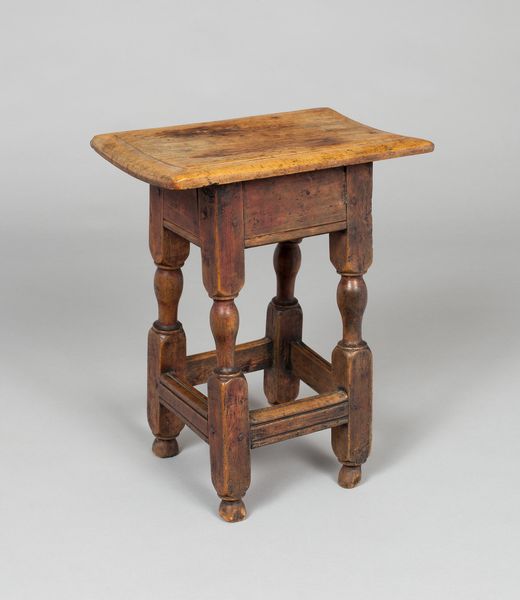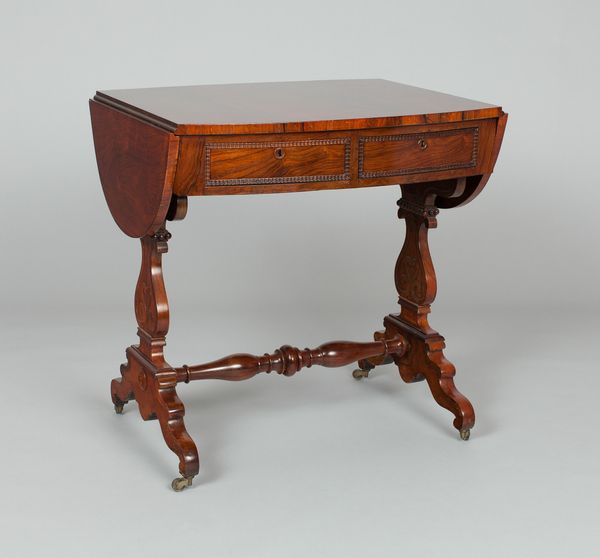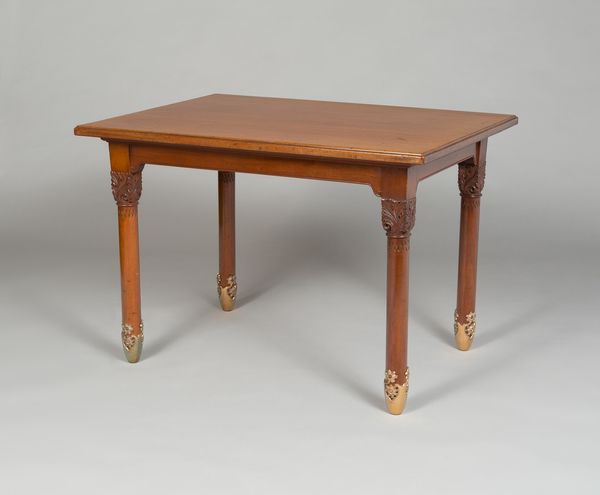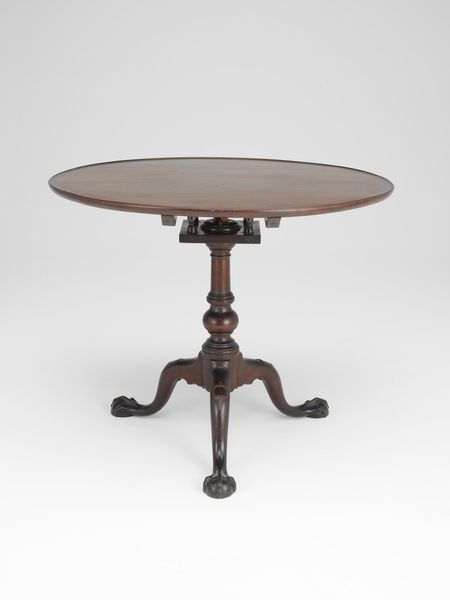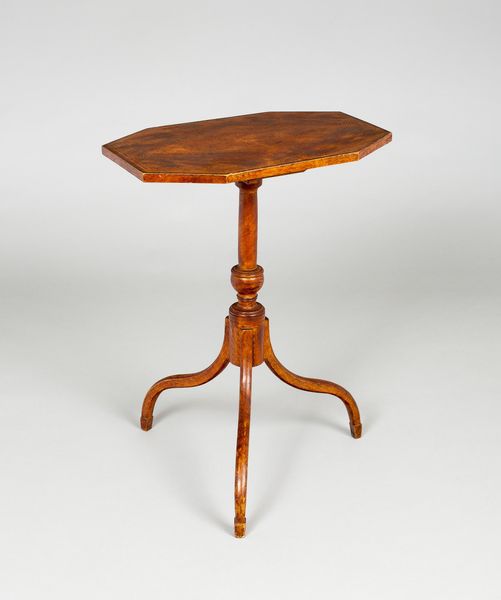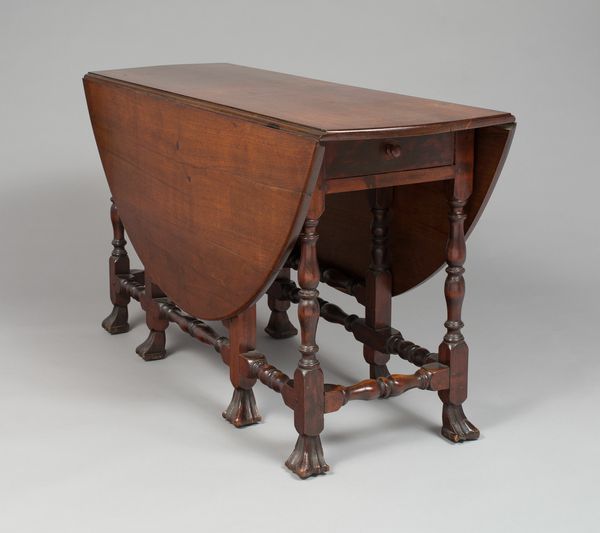
carving, wood
#
neoclacissism
#
wood texture
#
carving
#
furniture
#
wood
#
decorative-art
Dimensions: 73.7 × 45.7 × 92.7 cm (29 × 18 × 36 1/2 in.)
Copyright: Public Domain
Curator: Here we have a Card Table, crafted between 1819 and 1825, attributed to Isaac Vose & Son. It currently resides at The Art Institute of Chicago. Editor: Oh, it immediately strikes me as a stage. You know, ready for drama to unfold! Curator: The choice of wood is certainly central. We're seeing a remarkable wood texture and the extensive carving indicating meticulous labor and the use of highly prized material. It’s a wonderful demonstration of Neoclassical ideals rendered in functional decorative art. Editor: And that Neoclassical element! I’m immediately drawn to those scroll feet and the pedestal; the scrolls carry echoes of ancient Greek and Roman forms. One can imagine figures of myth or even just fashionable society members, leaning on something like that in paintings of the time. Curator: The craftsmanship highlights the material, of course. It showcases both the skill of the artisan and the consumer's aspirations. It is a kind of performance in itself: a performance of wealth and taste communicated through carefully worked material. Editor: Absolutely. Consider, though, the symbolism of gaming tables! Social rituals, veiled power plays… They served as both entertainment and negotiation grounds. What secrets unfolded around this particular table? It's laden with social meanings and possibilities. Curator: I agree the history imbues meaning, yet to study how Vose and his workshop streamlined furniture production offers insights into early American industrialization and labor practices. Its physical existence speaks directly of societal changes. Editor: It does! To me, that intersection really sings. We can think about what the table was, yes, and even how it came to be but even further think what this single place meant within its time. Curator: It certainly bridges both worlds, doesn’t it? We might study its means and methods or muse over its meanings—ultimately revealing cultural memory and continuities through these objects. Editor: Well said. Perhaps every carefully crafted object embodies this dance.
Comments
No comments
Be the first to comment and join the conversation on the ultimate creative platform.



